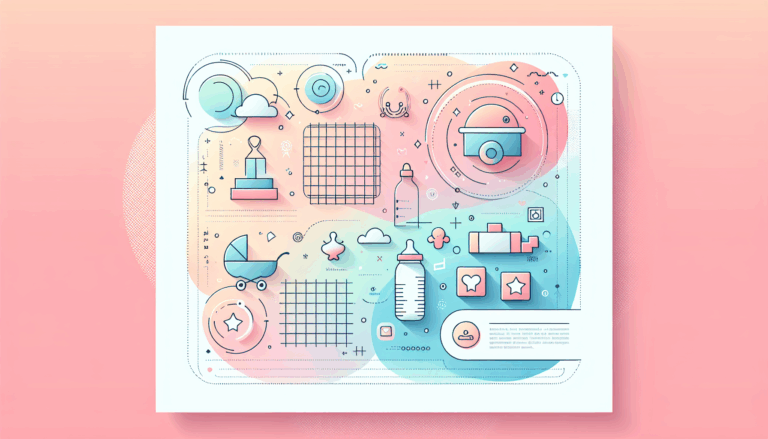Figma to WordPress: Creating Holographic Call-to-Action Buttons
Transforming Designs: From Figma to WordPress
When it comes to creating engaging and effective call-to-action (CTA) buttons, the journey often begins in design tools like Figma and ends on your live website, such as one built on WordPress. In this article, we will explore how to create holographic CTA buttons in Figma and seamlessly integrate them into your WordPress site.
Designing Holographic CTA Buttons in Figma
Designing interactive and visually appealing buttons is a crucial step in enhancing user engagement. Here’s how you can create holographic CTA buttons in Figma:
Building the Button Component
To start, open a new Figma file or create a new project if you don’t have one already. You can sign up for a Figma account at Figma.com if you haven’t already.
- Add Text and Auto-Layout: Click on the Text icon on the left-hand panel and type “Button.” Then, add auto-layout (Shift + A) to your button frame. This will help the button adjust dynamically based on its content.
Set the horizontal button padding to 36px and the vertical padding to 12px. Also, give the button a border radius of 8px to make it more rounded and visually appealing.
- Choose a Fill and Font: Add a fill to the button with a color of your choice. For example, you could use a shade of blue like #1C199. Then, adjust the text settings by making the font size 16px and the font weight “medium.”
To add an icon, use a Figma plugin like Iconify, which offers a vast collection of icons. Right-click on your canvas, go to the Plugins tab, and select Iconify to add an icon to your button frame.
Creating Interactive States
Interactive buttons are essential for providing real-time feedback to users. Here’s how you can create different states for your button:
- Default, Hover, and Active States: Use Figma’s prototyping feature to create different states for your button. This includes the default state, hover state, and active state. You can design these states as component variants within a single component set.
For example, you can change the button’s color or add a shadow effect when the user hovers over it. This makes the interface more intuitive and responsive.
- Grouping Buttons by States: Organize your buttons by their states to ensure consistency across your design. This also makes it easier to switch between different styles in your designs.
Integrating Buttons into WordPress
Once you have designed your holographic CTA buttons in Figma, the next step is to integrate them into your WordPress site.
Adding a Call to Action Button in WordPress
There are several ways to add a CTA button in WordPress, depending on your preferences and the tools you use.
Using Gutenberg Blocks
If you are using the Gutenberg editor, you can add a CTA button directly within your posts or pages:
- Insert Button Block: Edit a new post or page and click the add block button (the + symbol). Search for “button” in the available options or find it in the layout elements section. Customize the button text, URL, alignment, style, and colors as needed.
For example, you can change the text of the button to “Sign Up Now” and link it to a registration page on your site.
Using Plugins
For more advanced features, you can use plugins like Buttonizer or Forget About Shortcode Buttons.
- Buttonizer Plugin: Install the Buttonizer plugin from the WordPress plugin repository. This plugin allows you to create floating CTA buttons that can be configured to perform various actions such as linking to a URL, initiating a chat, or making a phone call.
Configure the button settings by clicking the wrench icon. Set the position, animation, style, and action of the button. You can also choose whether the button appears on desktop, mobile, or both.
- Forget About Shortcode Buttons Plugin: If you are using the classic editor, you can install the Forget About Shortcode Buttons plugin. This plugin adds an “Insert Button” option in your editor, allowing you to customize the button style, text, and URL without writing any code.
Real-World Examples and Case Studies
Example: E-commerce Website
Imagine you are designing an e-commerce website where you want to encourage users to make a purchase. You design a holographic CTA button in Figma with a “Buy Now” text and an icon of a shopping cart. You then integrate this button into your WordPress site using the Buttonizer plugin.
- Floating Button: Set the button to float in the bottom-right corner of the screen, ensuring it remains visible as the user scrolls through the page. This increases the likelihood of the user clicking on the button and completing the purchase.
Example: Service-Based Website
For a service-based website, you might want to encourage users to schedule a consultation. You design a holographic CTA button in Figma with a “Schedule Now” text and an icon of a calendar. You then integrate this button into your WordPress site using the Gutenberg blocks.
- Custom Link: Link the button to a scheduling page or a contact form, making it easy for users to take the desired action. You can also use plugins like WP Call Button to enable users to call you directly from the button.
Best Practices for Designing and Integrating CTA Buttons
Consistency and Design System
Ensure that your CTA buttons are part of a broader design system to maintain consistency across your website. This includes using the same styles, colors, and typography for all buttons.
Interactive States and Feedback
Use interactive states to provide real-time feedback to users. This includes hover effects, click animations, and button transitions that make the interface feel more responsive and polished.
Mobile Responsiveness
Design buttons that are responsive and scale based on screen size. This ensures that your buttons remain functional and visually appealing on both desktop and mobile devices.
Conclusion and Next Steps
Creating holographic CTA buttons in Figma and integrating them into your WordPress site is a powerful way to enhance user engagement and drive conversions. By following the steps outlined above and adhering to best practices, you can create visually appealing and interactive buttons that align with your design goals.
If you need help transitioning your Figma designs to WordPress, consider using a service like Figma2WP Service to ensure a seamless and professional integration. For more complex designs or custom requirements, don’t hesitate to Contact Us for personalized support.
By leveraging the capabilities of both Figma and WordPress, you can create a compelling and interactive user interface that drives engagement and conversions. Start designing your holographic CTA buttons today and watch your website’s performance improve significantly.
More From Our Blog
Building a Trusted Online Hub for Parents: The Role of Design In today’s digital landscape, parenting websites and child care blogs serve as invaluable resources for families seeking guidance, community support, and expert advice. Creating an engaging, trustworthy, and user-friendly platform is essential for these sites to thrive, and design tools like Figma2WP Service have Read more…
Unlocking the Power of Hands-On Web Design with Modern Tools In today’s digital age, the ability to craft your own website has transformed from a daunting technical challenge into an engaging creative process accessible to enthusiasts, DIYers, and professionals alike. Services like Figma2WP Service empower you to convert your design concepts into fully functional WordPress Read more…


